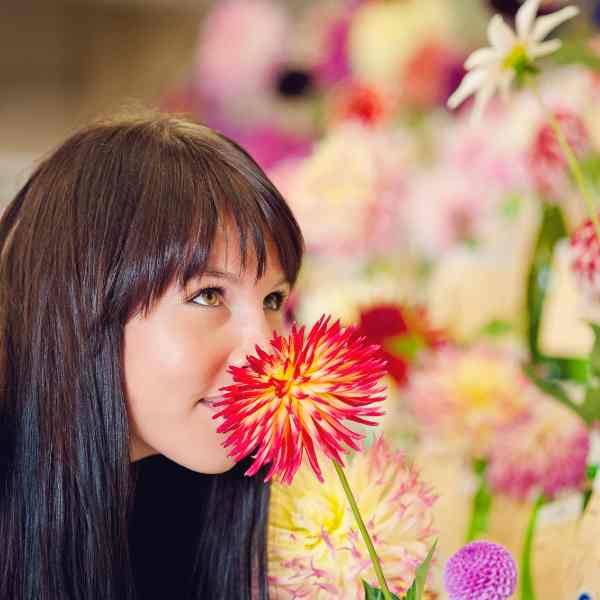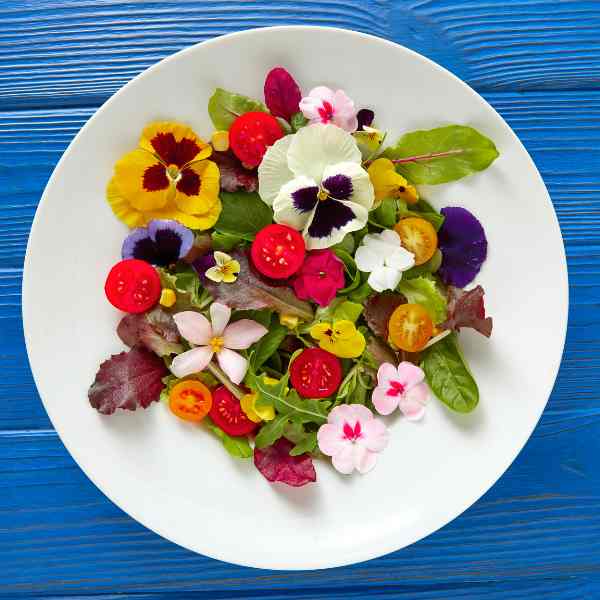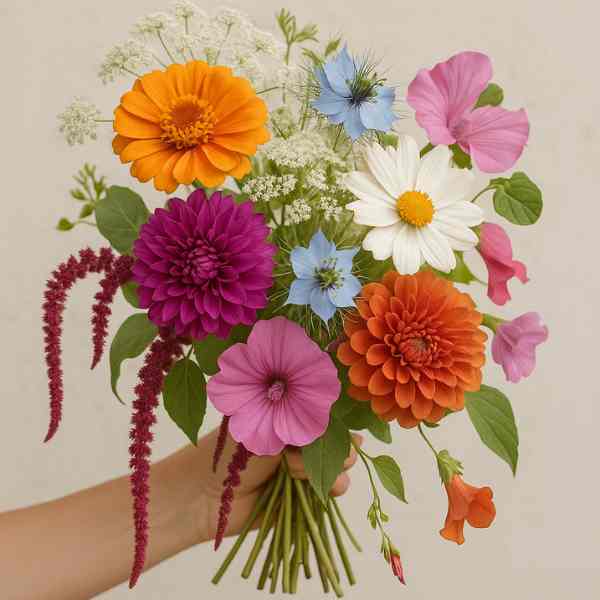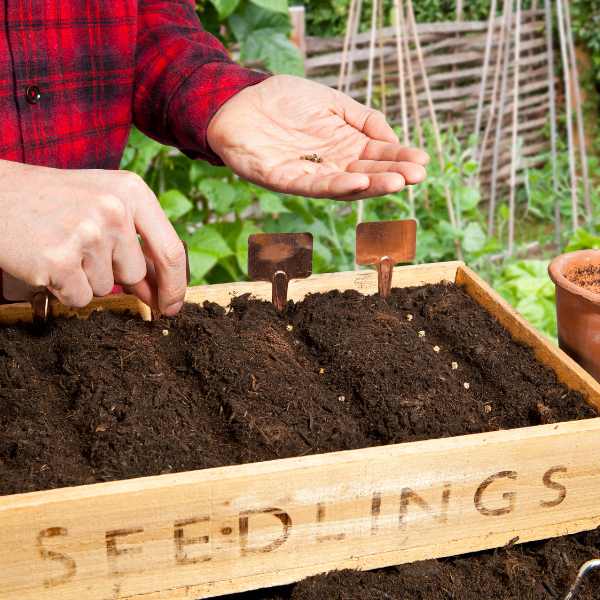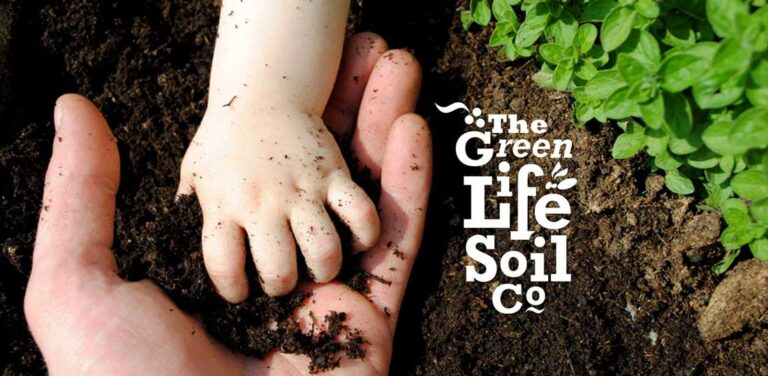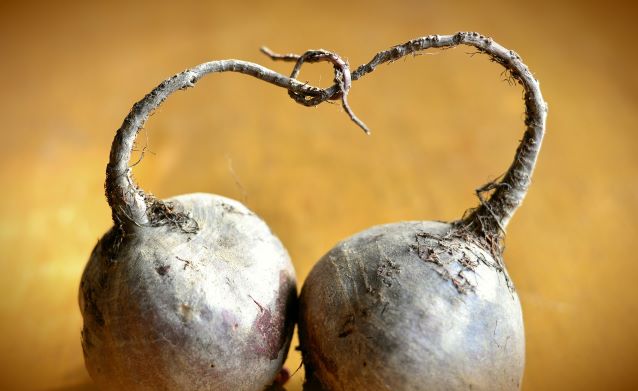How To Grow Cut Flowers From Seed

🌼A Beginners Guide to Starting A Cut Flower Garden
There’s nothing quite like stepping outside and snipping a handful of your own fresh flowers for the table. Whether you’re after a riot of colour, a delicate bouquet for a friend, or a bucketful for an event, a dedicated cut flower garden brings beauty and joy in spades.
Let’s walk through everything you need to know, from choosing your flowers to harvesting your blooms. You don’t need acres of space or decades of experience. Just a little planning and a willingness to learn as you go. Ready? Let’s dig in!
🌸 Step 1: Start with What You Love
Before you grab a spade or fill your seed trays, think about the flowers you’re drawn to.
- Do you like bold, bright blooms or soft, romantic colours?
- Will you be making elaborate arrangements or just snipping for simple vases?
- Do you need long vase life, or are you happy with quick, fleeting blooms?
- Do you want to dry flowers for crafts or save seeds for next year?
Getting clear on how you’ll use your flowers helps narrow down your choices and gives your garden purpose. This isn’t about growing everything but rather what makes your heart sing.
🗺️ Step 2: Plan Your Flower Patch
Even a small patch of ground can be turned into a flower powerhouse with a bit of planning.
Sketch out your space, noting sun exposure and what’s already planted. Most flowers need full sun—at least six hours a day. Use the classic layering trick: plant tall growers like sunflowers at the back, medium growers like cosmos or zinnias in the middle, and shorter varieties like calendula or pansies at the front.
Include pathways for easy access and room for supports like stakes or netting. This helps prevent tall stems from toppling in wind or rain.
💡 Tip: Raised beds are wonderful, but not essential. Even gentle soil mounds can improve drainage and help roots breathe.
🌱 Step 3: Prepare Your Soil
Healthy soil = happy flowers.
Start with soil that’s loose, well-draining, and full of organic matter. Mix in compost, aged manure, or organic fertilizers.
Adding things like peat moss can give your flowers an extra boost. Mulch helps too as it keeps moisture in and weeds out.
If your soil is heavy or compacted, your flowers will struggle to grow roots. Try a raised bed or large pots with quality soil.
☀️ Step 4: Pick the Perfect Spot
Sunshine is essential. A little afternoon shade is okay for delicate flowers, but most cut flowers need sun to thrive. So go for four to six hours of sun daily.
Read the descriptions provided on the seed packet or in the product description to help determine the ideal location.
📅 Step 5: Plant at the Right Time
Most cut flowers are warm-season annuals. Late spring or about two weeks after your last frost is ideal.
In warm temperate areas autumn can also be a good time to sow so check your seed packets for timing.
🌸 Succession planting is the trick to nonstop blooms! Replant every 2–3 weeks during the season so you’re never without fresh flowers.
🌼 Step 6: Feed and Water Regularly
Like any productive garden, cut flowers need consistent care.
Feed your plants with a liquid flower fertilizer every 2–3 weeks. Compost and aged manure work well too. Keep watering steady, especially in those first weeks after sowing.
Water at the base of the plant in the early morning or evening to reduce evaporation and prevent disease.
🌷 Step 7: Choose Easy and Beautiful Varieties
If you’re just starting out, pick flowers that are generous bloomers, easy to grow, and long-lasting in a vase.
Great Beginner Cut Flowers:
- Zinnias – Fast-growing, colourful, and long-lasting.
- Cosmos – Whimsical and airy, great vase life.
- Sweet peas – Fragrant and lovely (but a bit fussy).
- Dahlias – Showy and stunning, worth the extra care.
- Cornflowers – Hardy and long-lasting.
Mix annuals like cosmos and zinnias with perennials like peony poppies or echinacea to keep the garden going all season.
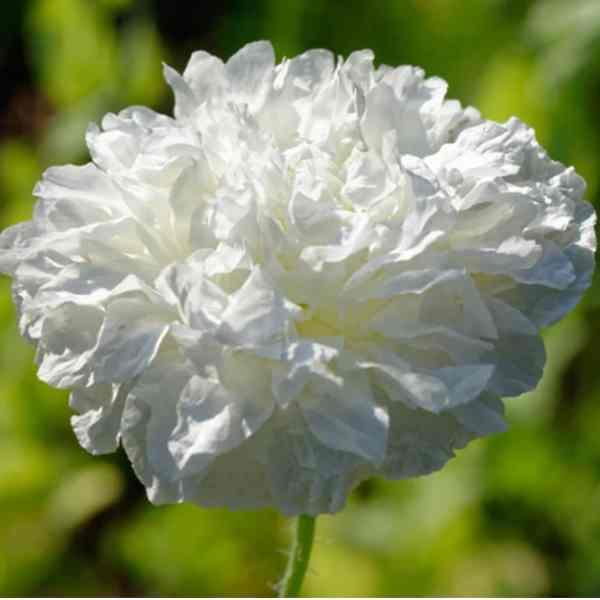
Poppy Double Cream
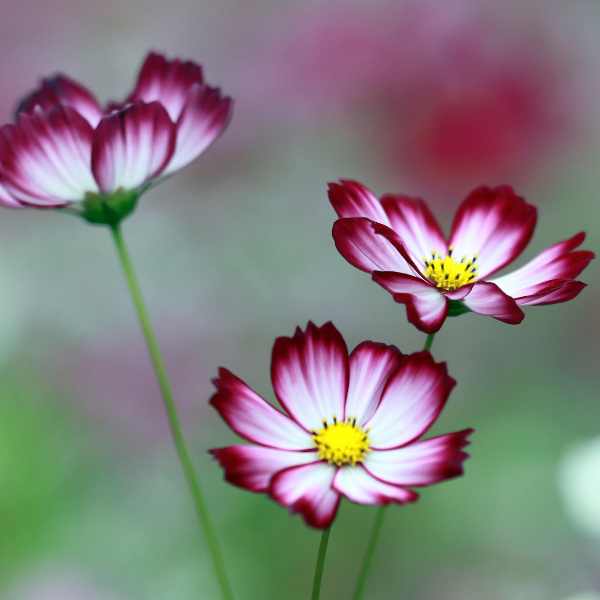
Cosmos Picotee
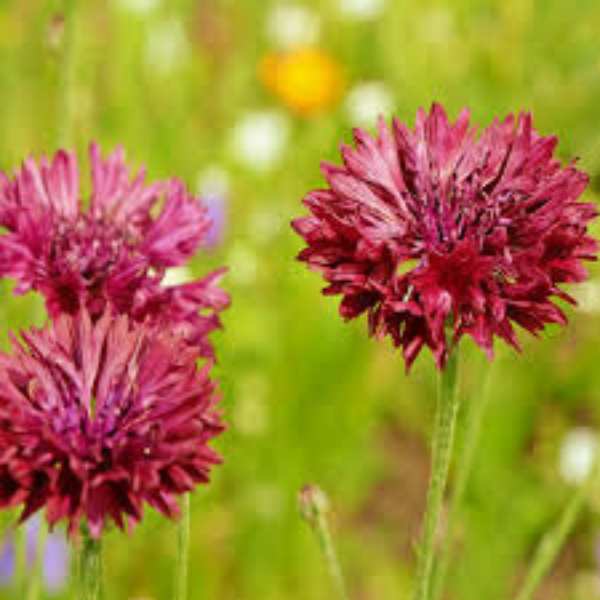
Cornflower Red Ball
✂️ Step 8: Harvesting Flowers
Here’s where the magic happens.
- Pick flowers just before they fully open for the longest vase life.
- Cut in the early morning or evening when stems are full of water.
- Use clean, sharp snips and cut stems at an angle.
- Strip off any leaves that would sit below the water line.
- Pop your blooms into a bucket of cool water as you go.
💡 Pro tip: Let your flowers hydrate for a few hours in water before arranging. It helps them perk up and last longer.
💧 Step 9: Keep Your Blooms Fresh
You’ve done the hard work—now keep those bouquets looking beautiful!
- Use clean vases (bleach and rinse if needed).
- Change water daily.
- Trim stems every couple of days.
- Remove any wilted blooms or leaves.
- Feed with a teaspoon of sugar.
🎨 Step 10: Think in Layers – Fillers, Spillers & Thrillers
When arranging, florists often build bouquets using these three elements:
- Thrillers – your focal flowers (Dahlia, Zinnia, Aster, Amaranth)
- Fillers – to bulk and soften (Gypsophila, Queen Anne’s Lace, Nigella)
- Spillers – trailing or airy elements (Lavatera, Nasturtiums, Love Lies Bleeding)
💥 A few favourite “thrillers” to grow:
- Dahlia Cactus Mix & Pompom Double Mix – sculptural and bold.
- Amaranth Love Lies Bleeding – dramatic cascading ropes.
- Aster Giant Ray & Powderpuffs – dense and colourful.
🌼 Hot tip: Don’t be afraid to grow something a little more unusual like Celosia Pampas Plume or Mexican Hat Flower for texture and talking points!
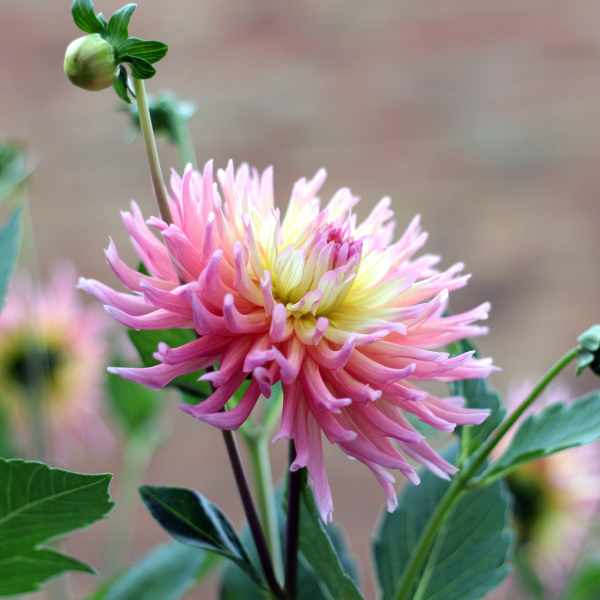
Dahlia Cactus Mix

Aster Powder Puff

Zinnia Cupcake
🌿 Bonus Tips for a Bloom-Filled Season
🌷 Deadhead regularly. Remove fading blooms to keep plants producing.
🌷 Pinch young plants. Snipping the tips off seedlings like zinnias and cosmos helps them branch and grow longer stems.
🌷 Support tall plants. Use twine, netting, or cages to keep them upright.
🌷 Mix in foliage and fillers. Don’t forget plants like rosemary, eucalyptus, feverfew, or Queen Anne’s Lace to round out your bouquets.
🌷 Save your seeds. Let a few plants go to seed and harvest on a dry day. Store in labelled paper bags for next season.
🌷 Share your flowers! Drop a little bunch to a friend, bring a jarful to the office, or decorate your kitchen table. Growing flowers is a joy—but sharing them is even better.
🏮 Seek And You Will Find
A good source of inspiration is to check out the Flower Seed Category on the website.
Here you can search for flowers by the following: Annual, Climber, Perennial, Edible, Scented, Low Height, Medium Height and Tall Height. Or just browse through the different varieties to see what catches your eye.



